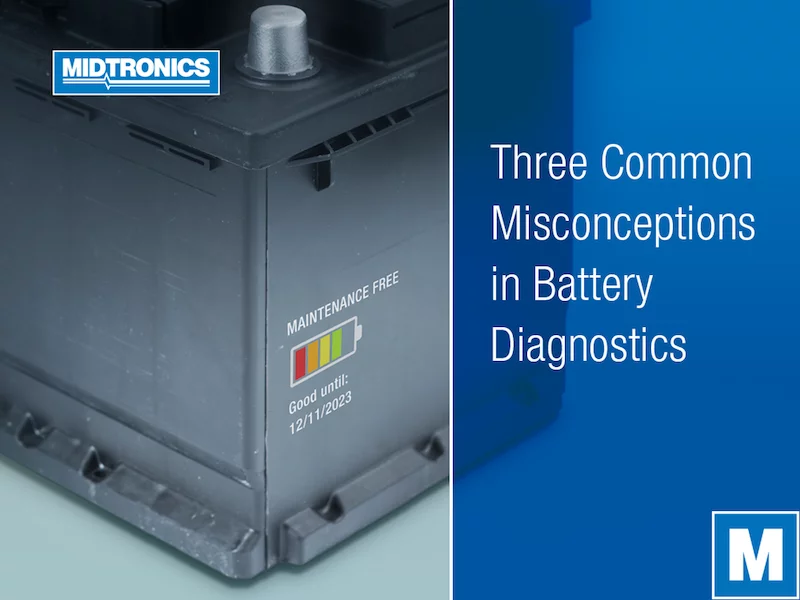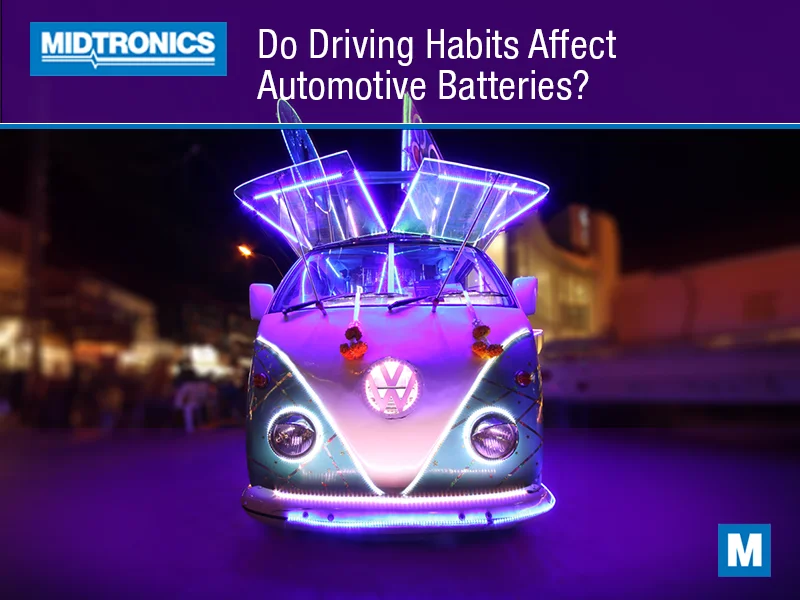Batteries tend to decline in performance after a few years, and it often catches you by surprise. It might seem unexpectedly fast that the battery doesn’t hold a charge, or it could be that your investment in a high-quality battery didn’t extend the lifespan as much as you thought it might. But has the battery actually failed?
Battery diagnostics seem clear-cut, however, there’s more to it than initially meets the eye. It’s easy to write a battery off as end-of-life when it might still have years of dependable service left. And vice versa—a battery that seems good might be failed and desperately in need of replacement.
Here are three common misconceptions when diagnosing a battery that could put you down the wrong path.
Misconception #1: Voltage alone can be used to diagnose a battery
A fully charged 12-volt battery should be 12.6 volts or higher when it’s tested at rest, and that’s often a metric that is relied upon to determine if a battery is still good. A multimeter can show this result, as can a diagnostic scan test. But the battery voltage might appear to be completely normal while the battery is bad.
Voltage under load is a better indicator, but it’s difficult to test under load without a battery diagnostic tester like the Midtronics CPX-900. Voltage can appear fine until the vehicle’s battery has a load on it, which is when it plummets and doesn’t return to the normal range.
And the opposite is true as well. If the voltage is low, it does not mean the battery has served its useful life. The problem could be elsewhere, like an alternator incapable of supplying the necessary output to charge the battery. It could also be a matter of frequent driving trips too short to replenish the battery’s capacity that, over time, accumulate to deplete the charge. Or, it could be due to a load left on like headlights or a malfunction in an electrical system.
Low voltage can lead to accelerated sulfation, but soft sulfation can sometimes be reversed by charging it under certain conditions.
Diagnosing a battery using voltage alone is incomplete and can lead to frustrations as well as needless battery replacements.
Misconception #2: CCA alone can be used to diagnose a battery
On a battery test, checking the cold cranking amps is often an indicator people look for to see if the battery will operate under stressful conditions. If the rated amperage is met or exceeded on a test, it’s assumed the battery is good and insufficient amperage must mean it’s bad. That might be true sometimes, but not always.
It’s possible for a battery to be tested as meeting or surpassing the rated CCA and still be bad. It’s particularly true when the reserve capacity is no longer sufficient to crank the engine over for several subsequent starts.
Alternatively, low CCA test results don’t always mean the battery is bad or beyond help. The main cause of low cranking amperage is stratification, where the sulfuric acid settles to the bottom of the battery due to low charge, underuse, or shallow discharges. It can cause an artificial bad result if CCA alone is the metric observed, but it’s reversible in many cases. Replenishing the depleted charge after resting the battery or gently shaking or tipping it can help restore it, saving the cost of replacement.
Misconception #3: You can hear or see a battery failing
There can be visual cues that the battery is failing, as well as audible symptoms you might notice. A bulging battery case is almost always a sign you’ll need to change it, but there are plenty of other physical symptoms that can be misleading.
Dim lights – battery must be bad
If you detect a flicker from the headlights when you’re idling at night or they appear dimmer than normal, it’s commonly attributed to a battery that’s on the way out. But those symptoms can be for issues aside from the battery like an alternator that isn’t charging properly or aging headlight bulbs that are about to burn out.
Watching for visual cues from the lights might mean the possibility you install a battery unnecessarily, and without actually fixing the problem.
Problems with engine revving – battery must be bad
If the engine is hunting for an RPM range or you need to hold your foot on the gas once it’s started, that can be a sign the battery is weak or failed. However, that’s not always true. Once again, there are several other conditions that can cause similar symptoms including a bad electrical connection, faulty MAP or MAF sensor, and more.
Car needs a jumpstart – battery must be bad
When the battery is depleted and needs a boost, it’s natural to consider the battery is the culprit. While it will need to be charged to accurately test and diagnose it, there could be other issues that cause the issue too. Anything from a weak starter, faulty alternator, bad wiring, or parasitic draw could be the root of the issue.
The engine starts – battery must be good
And conversely, just because the car starts and runs fine does not mean the battery is in good shape. That’s evident especially when the weather changes and the engine has trouble starting in below-freezing conditions. A battery capable of starting the engine in the warm weather might have conditions that render the voltage, cranking amps, or reserve capacity compromised, and it sets up the driver for trouble when there’s more stress on the battery.
Instead of falling victim to one of these misconceptions, batteries should be tested during every service visit using advanced testing equipment. Not only can it diagnose a faulty battery in a matter of a few minutes, but it can identify when the battery is good and your attention should be paid elsewhere.




